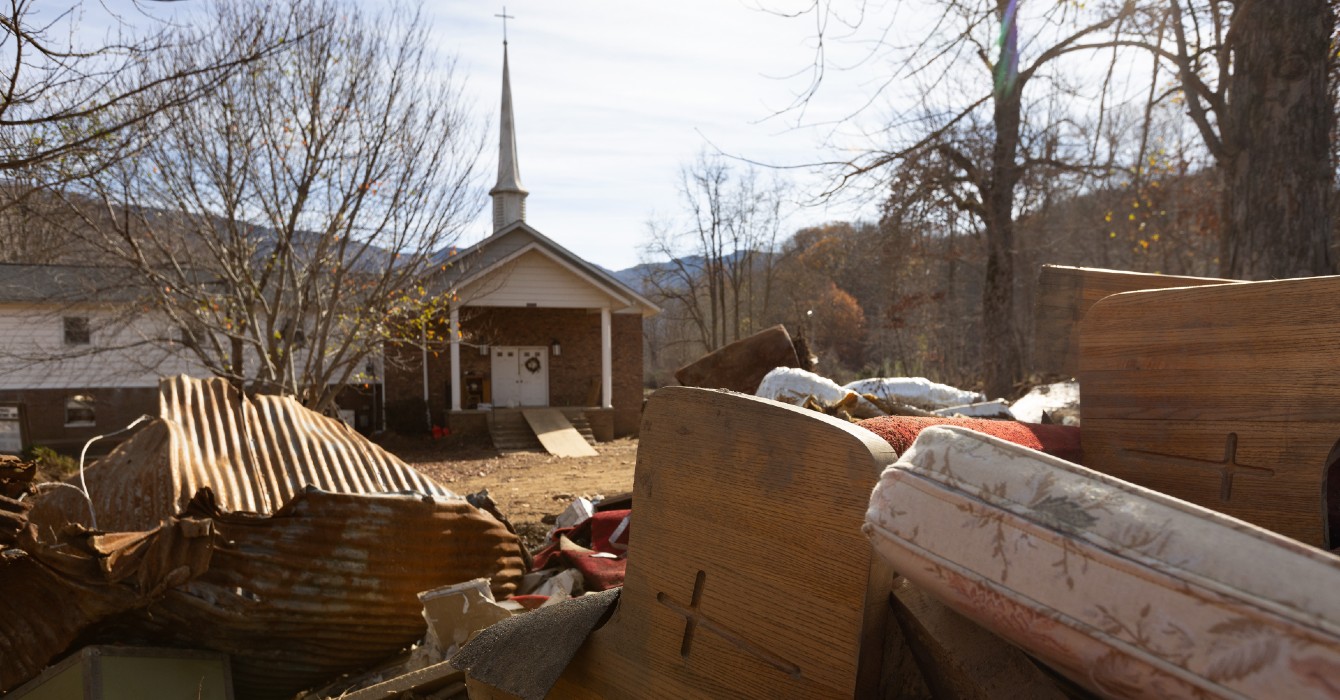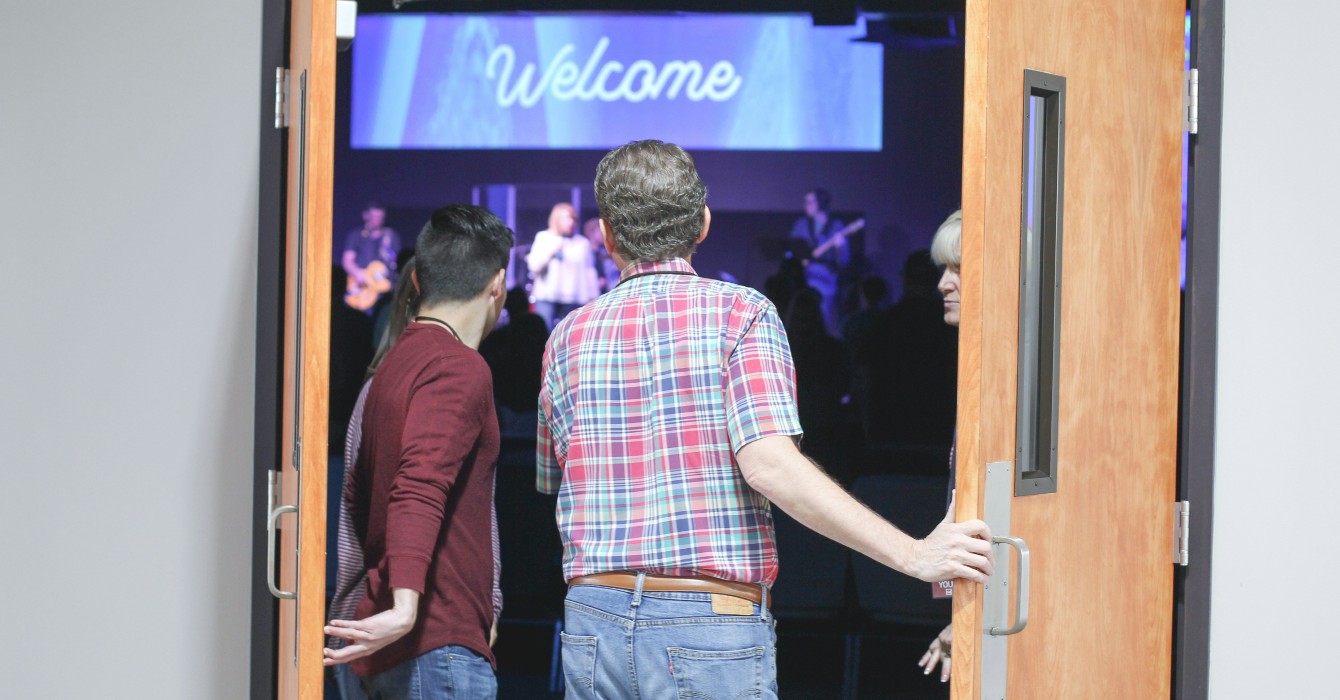By 10:15 every Wednesday morning, a dozen members of Bethesda United Methodist Church line up on one side of a long set of tables to assemble plates of food.
The menu on this particular October Wednesday is hot dogs in buns, accompanied by potato salad, coleslaw, chili, packets of mustard and a homemade brownie for dessert.
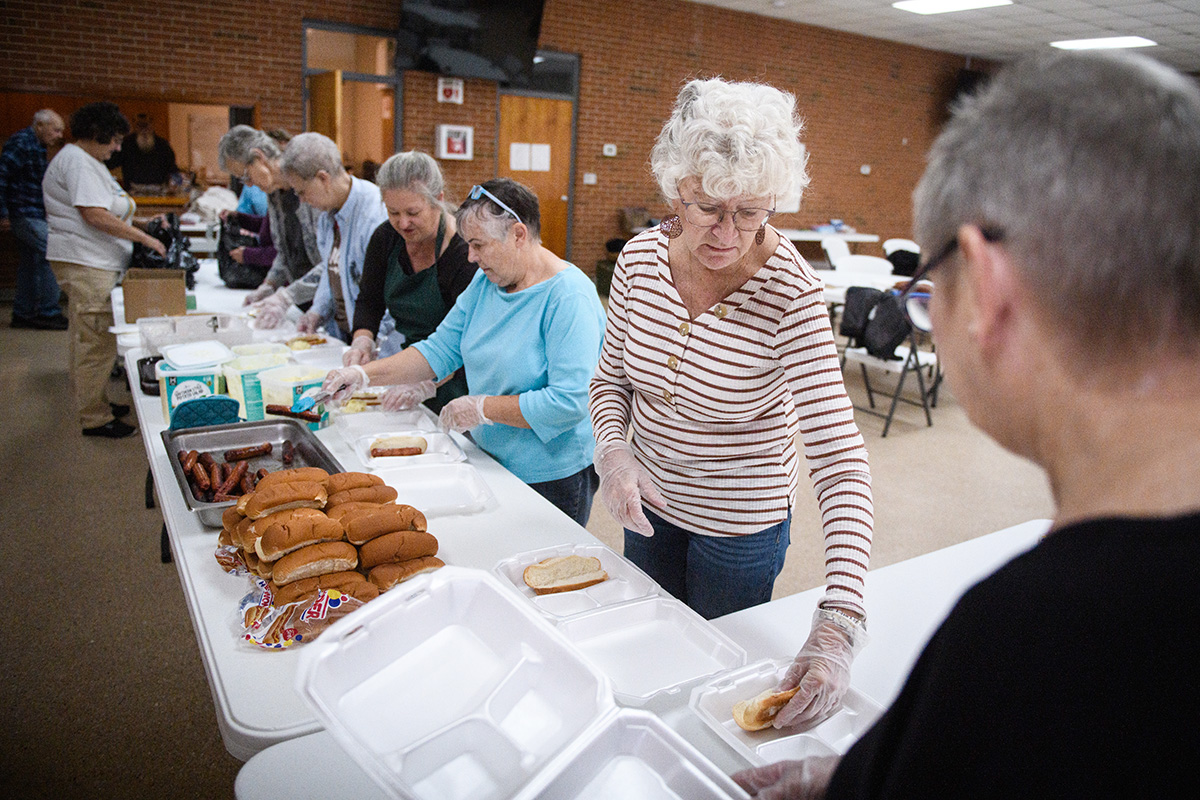
Sixty-five such plates are packed in foam containers with hinged lids. Each is topped with an index card printed with an encouraging verse of Scripture and tucked into a black plastic bag.
The bags are then divided among a set of coolers and loaded into members’ cars to be hand-delivered to people in need across Fairmont, North Carolina, a tiny town in Robeson County, North Carolina’s poorest.
This food ministry started during the COVID-19 pandemic to help shut-ins and people experiencing loneliness. Against the odds, it flourished amid an even bigger storm: a schism in the United Methodist Church in which 7,600 U.S.-based churches broke away from the denomination.
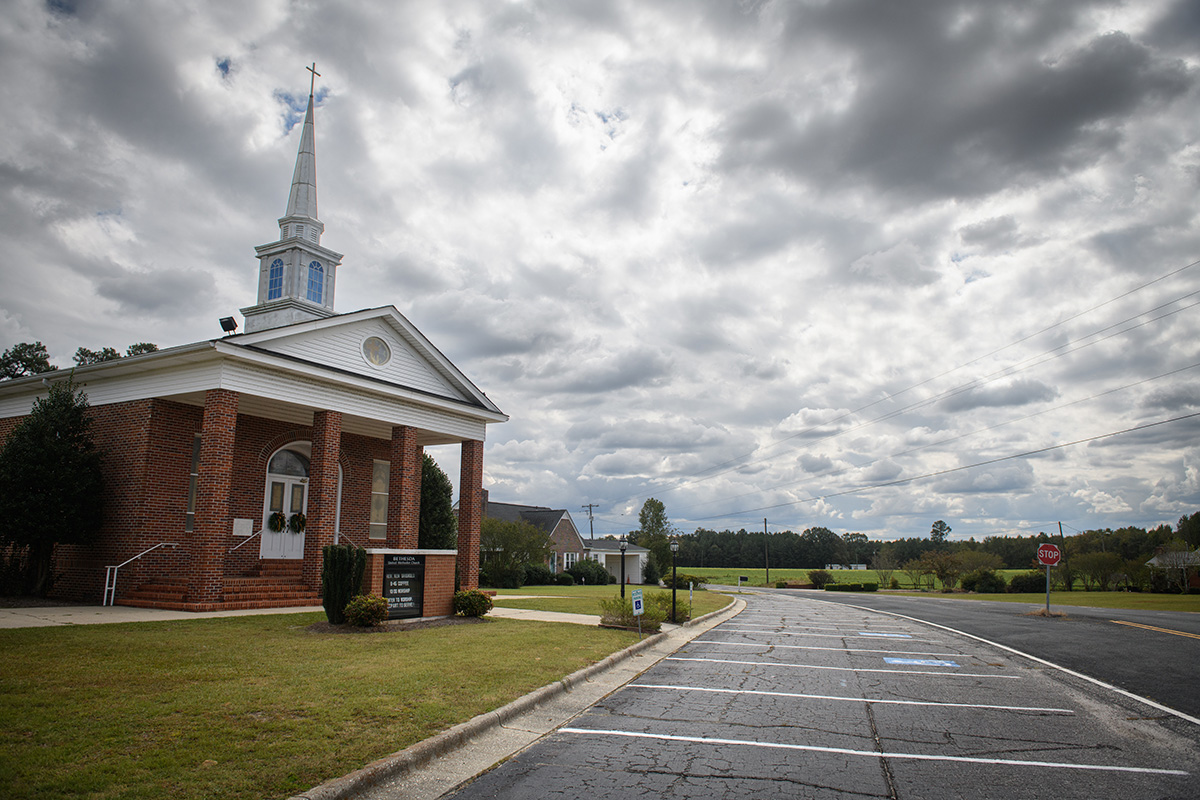
Who in your community is lonely? What could your church be and do to serve as a companion?
The split left a lasting scar at Bethesda too: about 15 families — or 30% of the church’s members — left.
Yet amid the turbulence, the feeding ministry provided focus, direction and stability.
“You have some things that you do, and you wake up and you’re like, ‘Oh, I got to do this.’ But I never wake up on Wednesday morning and feel like, ‘Oh, I got to go cook’ or, ‘Oh, I’ve got to go deliver,’” said Melissa McKee, who has been participating in the ministry since its inception. “I want to go out and see the people. Some of them are just so happy to see you and so appreciative and so thankful. It’s not a hard thing to do.”
Spirit-led to serve
The ministry’s work begins on Tuesday evenings. That’s when a handful of core volunteers begin cooking casseroles at home: a hash brown casserole, mac and cheese, candied yams.
Between 8 and 9 a.m. on Wednesdays, a dozen people gather in the church’s kitchen to heat up the food prepared the night before and to cook other items: barbecued chicken, green beans, corn.
What activity at your church provides focus and direction – through good times and bad?
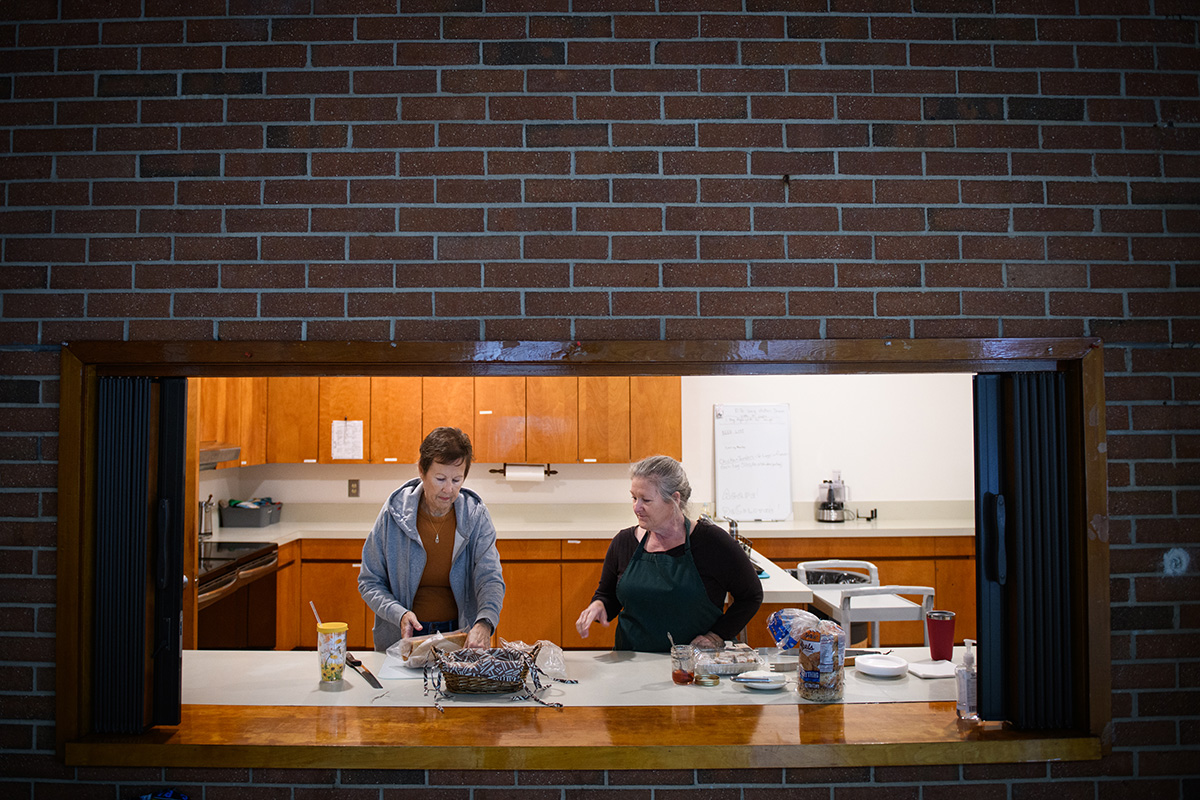
The meal recipients for this day are listed on index cards that church member Gale Wilcox has brought with her, along with a big pot of chili. Each volunteer visits, on average, five homes within a 10-mile radius of the church.
Robeson County is mostly rural, and the church is surrounded by fields of cotton and soybeans. Tobacco used to be the cash crop here, but when federal price supports went away in the early aughts, many quit farming and sold their land. Some took jobs in a growing number of chicken processing plants. Poverty deepened. Crime spiked. Fresh food became scarce.
As church volunteers prepare and assemble plates of food in the church’s fellowship hall on Wednesday morning, they inquire about the many people they have come to know on their delivery routes.
“Is Mr. Ellis still in the hospital?” someone asked one week.
“Did John get a hospital bed for Helen?” someone asked the following week.
The volunteers reminisce about people they name, like Iola, Versa, Sabrina and Brenda Faye — some living, some dead — that they’ve heard about over the course of the week.
“We feel like we’ve been Spirit-led to serve those that we serve,” said Kathryn McDaniel, one of the core volunteers. “It’s been amazing the way we’ve been led to people.”
The ministry has grown to encompass a broad spectrum of Robeson County’s racial demographics: 40% Native American, 23% Black, 11% Hispanic. Among them are many people who live in substandard housing on dirt roads that flood when it rains. A large percentage are disabled and cannot work. Many cannot drive. Their one human contact throughout the week may be the food ministry volunteers who hand them a warm meal and inquire about their health.
But before they set out on their appointed rounds, volunteers form a wide circle, hold hands and pray:
“God, thank you for allowing us to be a part of the moving parts that are the story you are telling in this church and in the world,” prays the Rev. Ken Griswold, Bethesda's pastor. “Continue to bless and heal and strengthen all of those in need. We thank you for those opportunities. … We look forward to going into places where the Spirit leads us that you’re calling us to.”
How does the Holy Spirit inspire your congregation? What opportunity or challenge continues to get your attention? With whom could you scheme to take action?
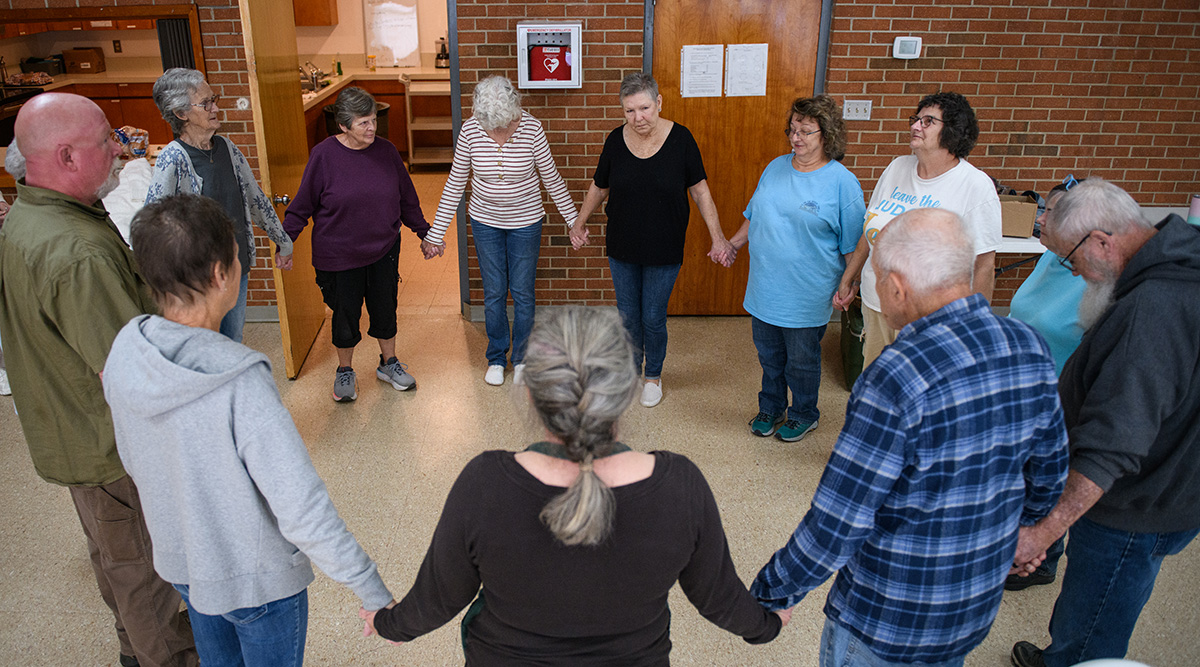
Focused on mission
When the members of Bethesda were first considering a food ministry, the United Methodist Church was in the midst of an acrimonious five-year window in which thousands of churches across the U.S. sought and received permission to leave the denomination.
As discussions over disaffiliation were gaining momentum, church leaders also applied for a grant from the North Carolina Rural Center, a nonprofit that advocates for rural economic development in the state’s 78 rural counties.
The Rural Center’s Connect Church grant requires congregations to consider their assets and the community’s needs as part of a nine-month guided process. Those who complete the process receive startup money to implement their ministry through the center’s partnership with The Duke Endowment and Lilly Endowment Inc.
In 2021, Bethesda received $15,000 to scale up the feeding ministry. The grant allowed the church to upgrade its kitchen with a commercial refrigerator, a food warmer, an ice maker and two kitchen stoves. In return, the church promised to prepare, package and deliver at least 50 meals a week to people experiencing food scarcity.
Who are the organizations in your community that have funds available so that a congregation can address opportunities and challenges among its neighbors?
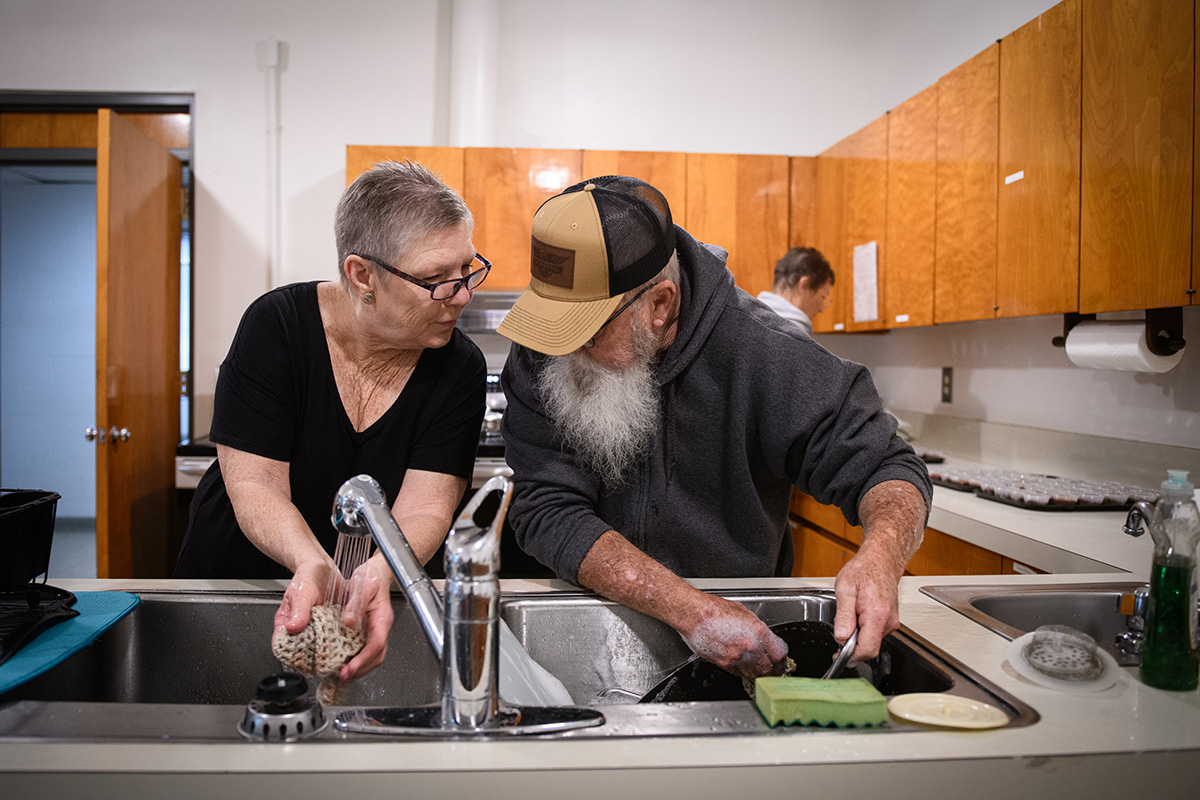
By then, about 15 or so core members had committed to the ministry. They had already begun to cook the meals in-house instead of buying plates of food from local grills. The ministry was growing beyond its COVID beginnings.
At the same time, the church was riven with conflict over whether to quit the United Methodist Church.
Bethesda’s members are conservative. Most oppose granting LGBTQ people ordination and marriage rites. They were troubled by what they saw as the denomination’s failure to enforce bans on same-sex marriage and the ordination of openly LGBTQ individuals.
For some, the denomination’s leniency was reason enough to break away. But regardless of where they stood, members of the feeding ministry were willing to jettison the human sexuality disagreements.
“The fact that they couldn’t agree about it was less significant than where they stood on the issue of being a good neighbor and creating lasting impacts on their community,” said Darren Crotts, the program manager for Faith in Rural Communities at the Rural Center, who worked with the church on its grant.
Crotts, who has worked with dozens of United Methodist congregations, said he has seen this phenomenon in other churches as well. The opportunity to develop a new ministry for the benefit of the community made internal squabbling over United Methodist policy a secondary concern.
In 2022, Griswold informed the church that if they voted to disaffiliate, he would not remain; they would have to find another pastor. He later found that volunteers in the feeding ministry, which had started under his predecessor, all stayed. Between 40 and 50% of the church's membership regularly volunteers in the ministry.
“There was a mission that kept us focused on something outside of the church and not inside the church,” he said. “I think that was critical.”
How might focusing on the experience of your neighbors help a congregation move beyond disagreements within your faith community?
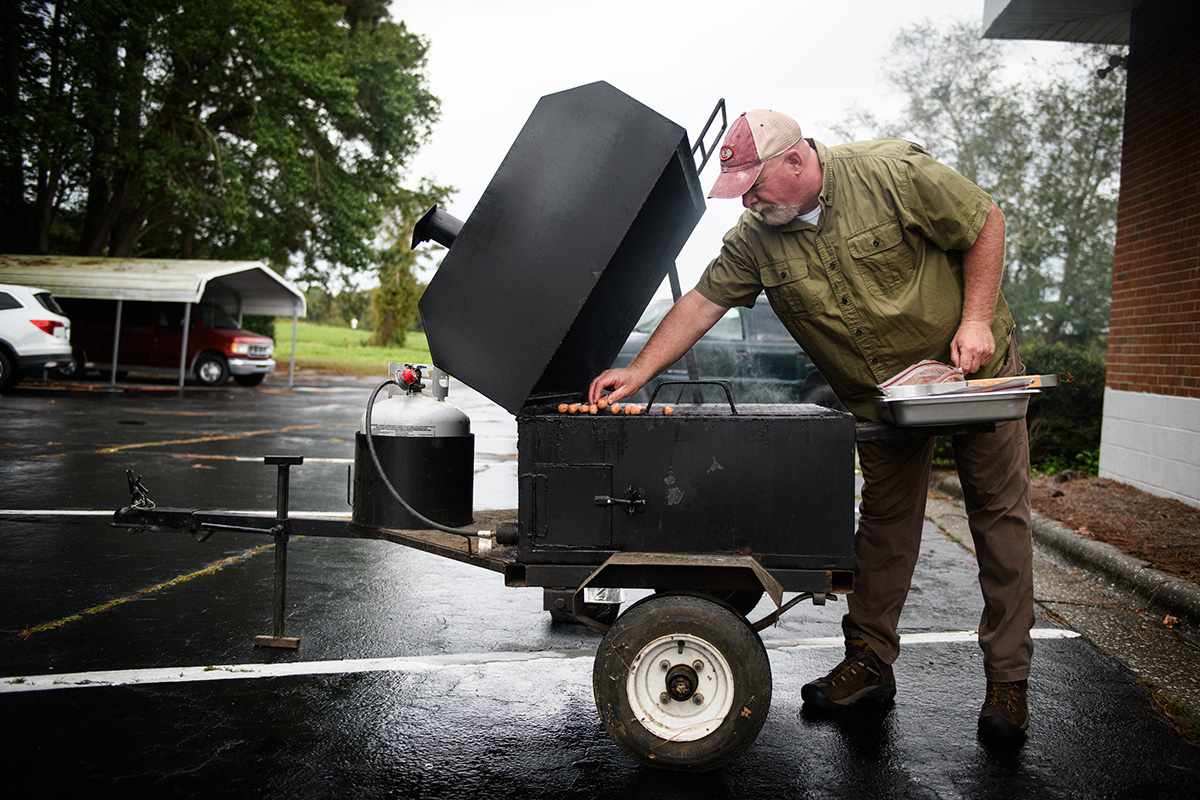
Bethesda is now in the process of securing another grant from the Rural Center for a project that would allow the church to become a resiliency hub in case of extreme weather. Robeson County is prone to flooding, and the Rural Center wants to equip churches to better handle climate change disasters.
The church is slated to receive as much as $50,000 to install a generator and a ductless mini split heating and cooling unit in its fellowship hall. If the power goes out, the church would be able to accommodate repair crews and host church mission teams overnight.
Although the church is small, with only about 40 active members, Heather Kilbourne, the Rural Center’s director of Faith in Rural Communities, said she’s confident its members can take it on.
“I’ve worked with a number of churches with less than 20 people on a Sunday that have done phenomenal ministry because all 20 people rolled up their sleeves and were part of that ministry,” Kilbourne said. “So when you look at a church of 20 with 20 volunteers, they can actually have a bigger impact than a church with 100 but only five or eight volunteers.”
What is your definition of the “critical mass” necessary to make a difference? How many people are needed to start and sustain a ministry?

Serving God with a plate of food
One such committed church member is Kathryn McDaniel, 67, a retired school nurse.
On this Wednesday, McDaniel packs 19 plates in the back of her Honda SUV. First on her list are two brothers, Kale and Lloyd, who live in a house where several of the windowpanes are broken and sealed with black plastic bags. The brothers are waiting on their front porch when McDaniel arrives. McDaniel asks whether they are keeping warm.
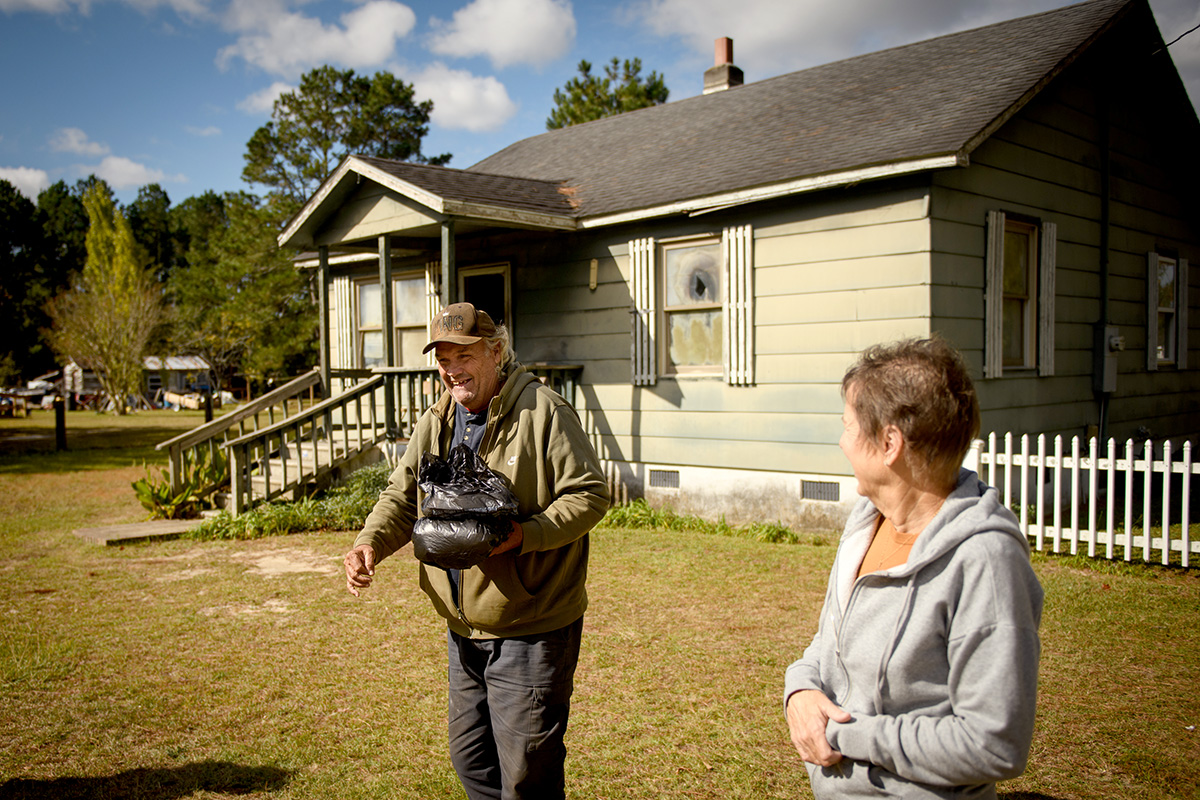
Next, she drives to Miss Mabel, a middle-aged woman whose poor health, including a series of ministrokes, has left her with garbled speech and unable to move on her own. McDaniel drops a plate for Miss Mabel, her husband and her home health aide. She has also brought along a copy of the Upper Room magazine that Miss Mabel likes to read.
Last on her itinerary is a rooming house called White Pond. Years ago, the cinder block structure was a refuge for men with the AIDS virus. Nowadays, 11 men and women, many suffering from addictions, rent out rooms. The linoleum floor is cracked, yellowed and dirty. Garbage bags are strewn around, and a litter of skinny feral kittens has taken refuge there.
McDaniel delivers 11 plates, placing them on a round table in the home’s common area.
She spots one man and asks his name.
“Did you go to school at Fairmont?” she asks the man, who said his name is Justin. “Did you ever go see me as the school nurse?”
Justin responds that he seems to remember her.
“I’m Kathryn,” she tells him. “I’m happy to meet you. See you next week.”
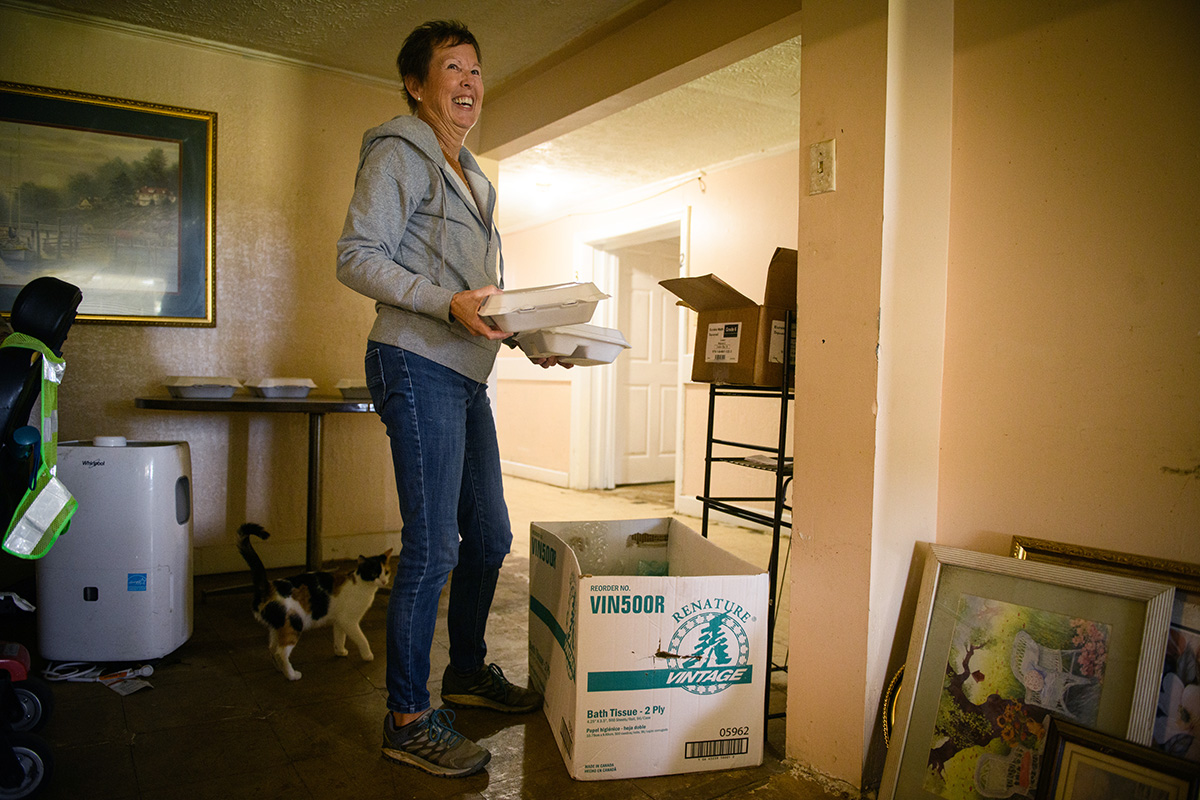
To McDaniel, bringing people plates of food is the way she feels she can best be obedient to God.
“I’m thankful we can be close to the community and know their needs and help them,” she said. “The world is a hurting, messed-up place. Serving God is all that matters.”
Questions to consider
- Who in your community is lonely? What could your church be and do to serve as a companion?
- What activity at your church provides focus and direction – through good times and bad?
- How does the Holy Spirit inspire your congregation? What opportunity or challenge continues to get your attention? With whom could you scheme to take action?
- Who are the organizations in your community that have funds available so that a congregation can address opportunities and challenges among its neighbors?
- How might focusing on the experience of your neighbors help a congregation move beyond disagreements within your faith community?
- What is your definition of the “critical mass” necessary to make a difference? How many people are needed to start and sustain a ministry?



